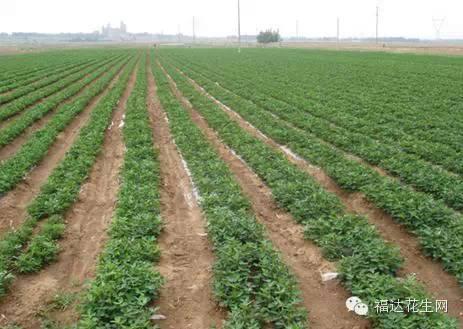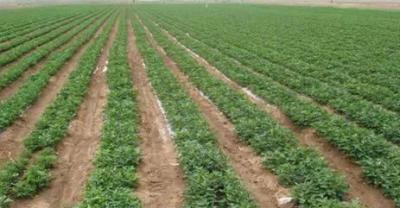Ridging planting of peanut changed the planting pattern and had a great impact on soil structure and growth.
Alpine planting in high mountain trench or hole sowing is mainly suitable for some fields with uneven formation and imperfect watering conditions. Ridge planting is a planting method accepted by middle land and fertile land in the south, which is carried out in fields with flat formation, deep soil layer and complete premise of drainage and irrigation, such as southwest, Hebei and Shandong. Peanut ridging planting has changed the planting method, which has a great impact on soil structure and peanut development, and the effect of yield reduction is obvious. in recent years, more and more peanut ridging planting has been accepted in Henan Province.
one。 Ridging and planting have the following secondary advantages:
The main results are as follows: 1) add the light-receiving surface to strengthen the soil temperature: after ridging, the surface is illuminated on three sides, which strengthens the ground temperature, which is beneficial to the budding of peanut, the penetration of fruit needle and the development of pod. According to the experimental determination, the ground temperature of the flower on the ridge was evenly added at the birthday of 1.7 ℃, the seedlings emerged 2-3 days earlier, the accumulated temperature at the seedling stage increased by 36-57 ℃, and the seedling development was strong.
2) thickening the living soil layer is beneficial to the expansion of needles and pods: peanuts are flowering on the ground, pods are openly podded, and their fruit needles are embedded in the soil, pods are expanded, root system development, rhizobium reproduction and nitrogen fixation movement, all require a loose soil condition.

3) it is beneficial to the light and ventilation in the field and strengthen the yield and quality: peanut is a light-loving crop, ridging the field with good ventilation and light, ineffectively improving the field microclimate and aggravating the attack and risk of diseases and insect pests. Maximize the edge disadvantage of peanuts, strengthen the strong level of peanuts, achieve the goal of more peanuts, full fruits, increase yield and improve quality.
4) strengthening the utilization rate of fertilizer (multi-application in high mountains, ridging and multiple application) is beneficial to drainage and irrigation and is beneficial to normal management and sowing.
two。 Ridging and planting ridging data
The high yield of Fuda peanut is 80 cm in common ridge, 50 cm in ridge width, 2 rows in ridge sowing, 30~40cm in small row spacing, 13.5 to 18 cm in hole spacing, 8500 in 11000 holes per mu, and two grains in one hole. At present, the distance between ridges in some areas of Henan is also around 75. In short, according to the situation in other places, it is fair to ensure that the fertile fields do not pour seedlings, and thin land can be closed to traffic.
three。 Peanut ridging and planting Foda peanut network initiative notes:
1) ridging with sufficient moisture: when raising ridges, there should be sufficient moisture, and when there is drought, ridges should be made first.
2) the distance between the rows of peanuts and the edge of the ridge should be kept above 10cm at most, ensuring that there are enough needles in the soil around the peanuts when they are in bloom.
3) with regard to the peanuts that need to pick the film, pay close attention to the temperature at the time of emergence and the time of the top soil to prevent the seedlings from burning. Now there is also an all-in-one machine for sowing plastic film and covering soil on the film, so there is no need for film matting.

- Prev

Is black wolfberry planting a scam? Why did he get rich? What planting techniques should be mastered?
Many people think that the cultivation of black wolfberry is a hoax, but it is actually misunderstood because there was a period of time when consumers bought fake "black wolfberry" news.
- Next

Huimin dental implant case records, Lu Lao accurate and painless dental implant before and after
"I used to have no teeth, so I had to cook the food very soft every day. I didn't expect to be able to chew hard food and eat normally at this age.
Related
- Fuxing push coffee new agricultural production and marketing class: lack of small-scale processing plants
- Jujube rice field leisure farm deep ploughing Yilan for five years to create a space for organic food and play
- Nongyu Farm-A trial of organic papaya for brave women with advanced technology
- Four points for attention in the prevention and control of diseases and insect pests of edible fungi
- How to add nutrient solution to Edible Fungi
- Is there any good way to control edible fungus mites?
- Open Inoculation Technology of Edible Fungi
- Is there any clever way to use fertilizer for edible fungus in winter?
- What agents are used to kill the pathogens of edible fungi in the mushroom shed?
- Rapid drying of Edible Fungi

